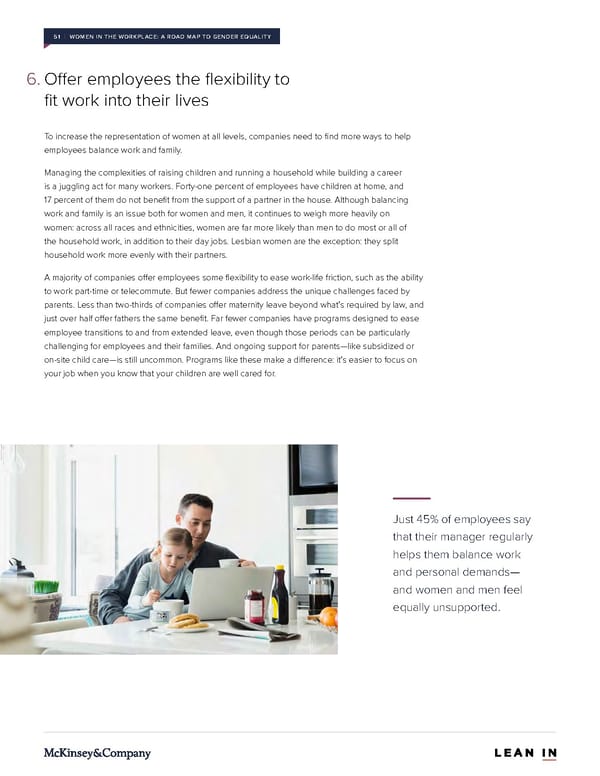51 | WOMEN IN THE WORKPLACE: A ROAD MAP TO GENDER EQUALITY 6. Offer employees the flexibility to fit work into their lives To increase the representation of women at all levels, companies need to find more ways to help employees balance work and family. Managing the complexities of raising children and running a household while building a career is a juggling act for many workers. Forty-one percent of employees have children at home, and 17 percent of them do not benefit from the support of a partner in the house. Although balancing work and family is an issue both for women and men, it continues to weigh more heavily on women: across all races and ethnicities, women are far more likely than men to do most or all of the household work, in addition to their day jobs. Lesbian women are the exception: they split household work more evenly with their partners. A majority of companies offer employees some flexibility to ease work-life friction, such as the ability to work part-time or telecommute. But fewer companies address the unique challenges faced by parents. Less than two-thirds of companies offer maternity leave beyond what’s required by law, and just over half offer fathers the same benefit. Far fewer companies have programs designed to ease employee transitions to and from extended leave, even though those periods can be particularly challenging for employees and their families. And ongoing support for parents—like subsidized or on-site child care—is still uncommon. Programs like these make a difference: it’s easier to focus on your job when you know that your children are well cared for. Just 45% of employees say that their manager regularly helps them balance work and personal demands— and women and men feel equally unsupported.
 Women in the Workplace Page 57 Page 59
Women in the Workplace Page 57 Page 59